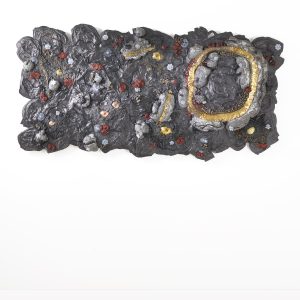Frédéric Naud
French Contemporary Sculptor
Human engineering is just a natural organic process.
Sculptures
The Neo-organisms

Beyond Humans: Resilience of the living
Natural or manufactured? Good or bad?
Humanity is so self-absorbed. We sometimes forget that we belong to the living world. Ever since Eve ate the apple, we have distanced ourselves from the world to become a separate entity — partly primeval and natural, and partly artificial and self-made.
And yet, like termites or polyps, we are all living beings more or less capable of complex organic processes. A glass bottle, a truck, a nuclear power plant, a termite mound or a coral reef… Are they not all just the result of some biological process?
Human engineering is just a naturel organic process !
The human brain, along with all its capacities, is perhaps the ultimate evolution of a natural process that started billions of years ago with cyanobacteria, the progenitors of our oxygen-rich atmosphere. From oxygen came nature, giving us the ability to do everything we’ve ever done and will ever do.
We are not just surrounded by nature. We are nature.
Hence, everything humankind makes can only be natural…
Nature and the imprints of living things
Even if we are only passing through, our imprint on nature will last long after we’re gone. Five mass extinctions in the past have led to our existence today. Glaciation, ocean anoxia, volcanic cataclysm, plate tectonics, meteorites… All these natural phenomena have resulted in the disappearance of more than 75% of living things, thus creating an opportunity for other life to evolve and to arise. That which we consider today as artifacts or artificial structures will be nothing but the natural imprints that humans leave behind.
Far from being the center of the universe or even the cause of its ruin, our species is just one of the many contributors to the evolution of life. A positive, realistic and collective way of viewing ourselves as a mere fragment of life’s history, on Earth and in the universe.


After us, the Neo-organisms
What if this quantity of carbon that we produce, and the traces of our passage on Earth, became the fertile ground of new life forms — new species? And what if this deep, dark element that seems to be leading us to our extinction were to become a luminous source of life?
The “Neo-organism”, a voyage after another million years of evolution, long after we’re gone. What will spring forth from our ashes?
Planet Earth and its lifeforms did not wait for humans to die out and to be reborn
While we are just beginning to realize our insignificance on the scale of space and time, our extinction already appears possible – even probable. The damage that we have inflicted upon our environment becomes apparent only when the impact seems irreversible. Carbon balance, carbon footprint, CO2 emissions… It all seems to come down to carbon as the measure of human activities and our own annihilation. But beyond our blinding egocentrism in this dark vision of carbon and of our impact on Earth, could not this element be a source of life?


















